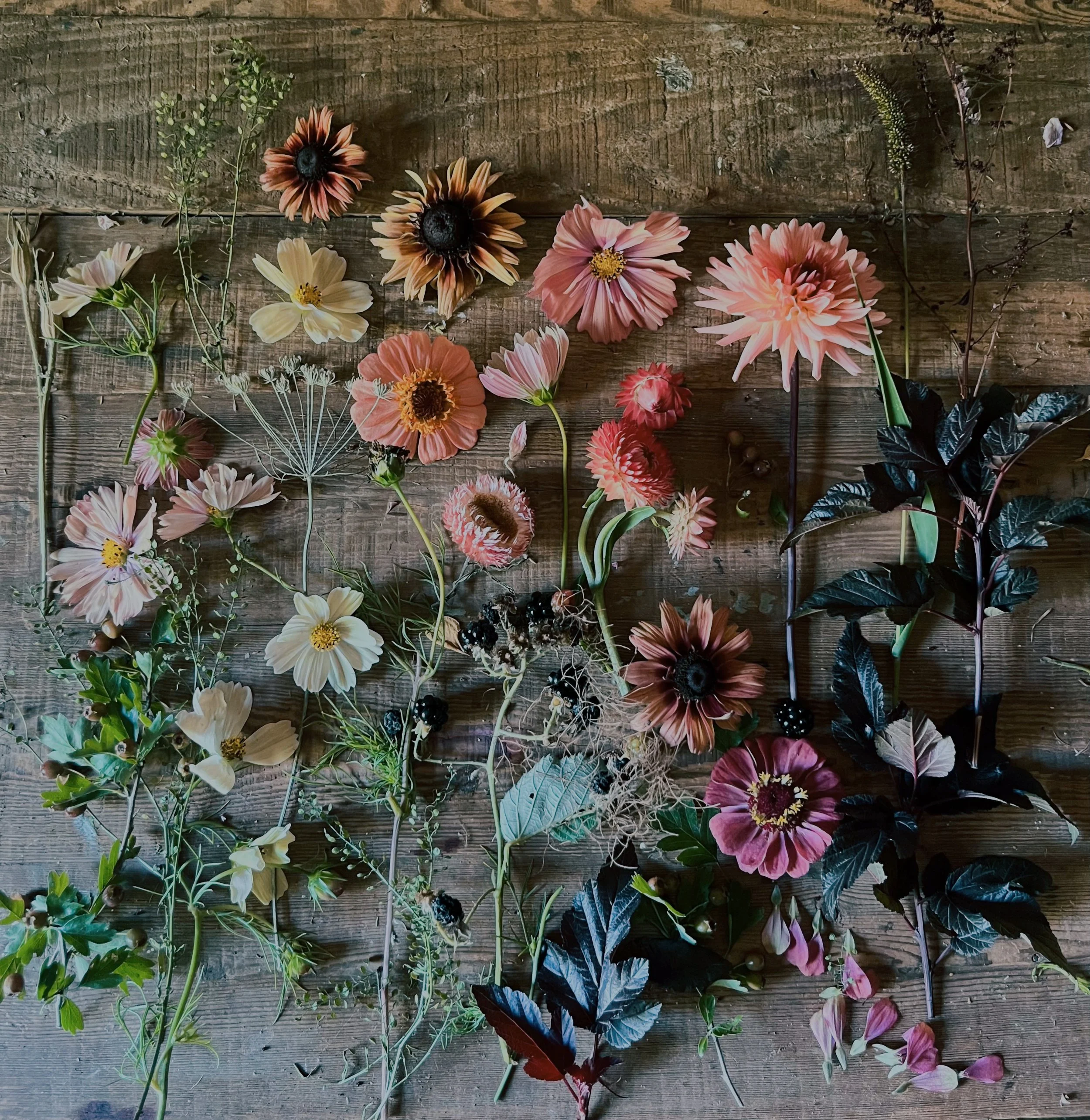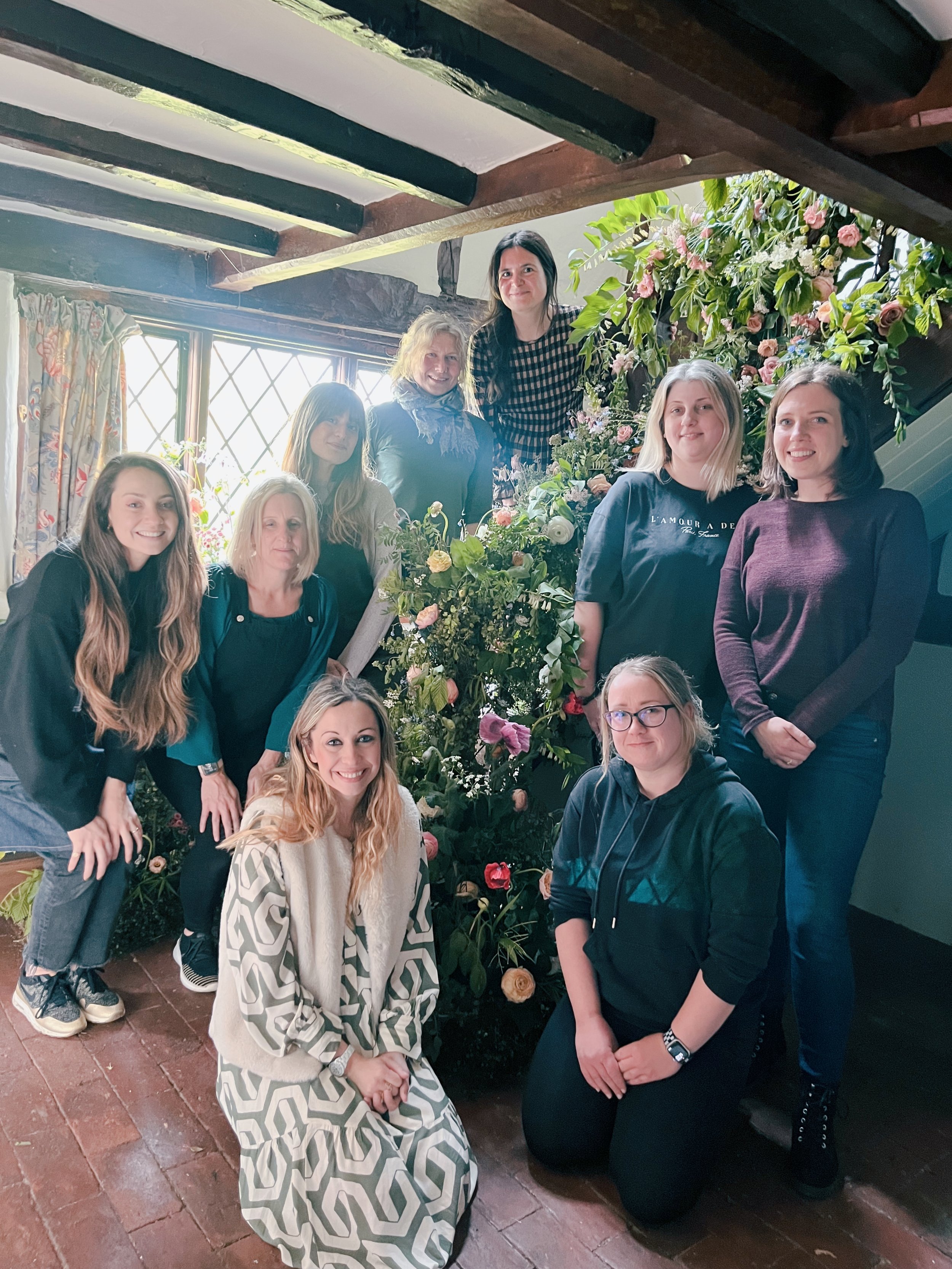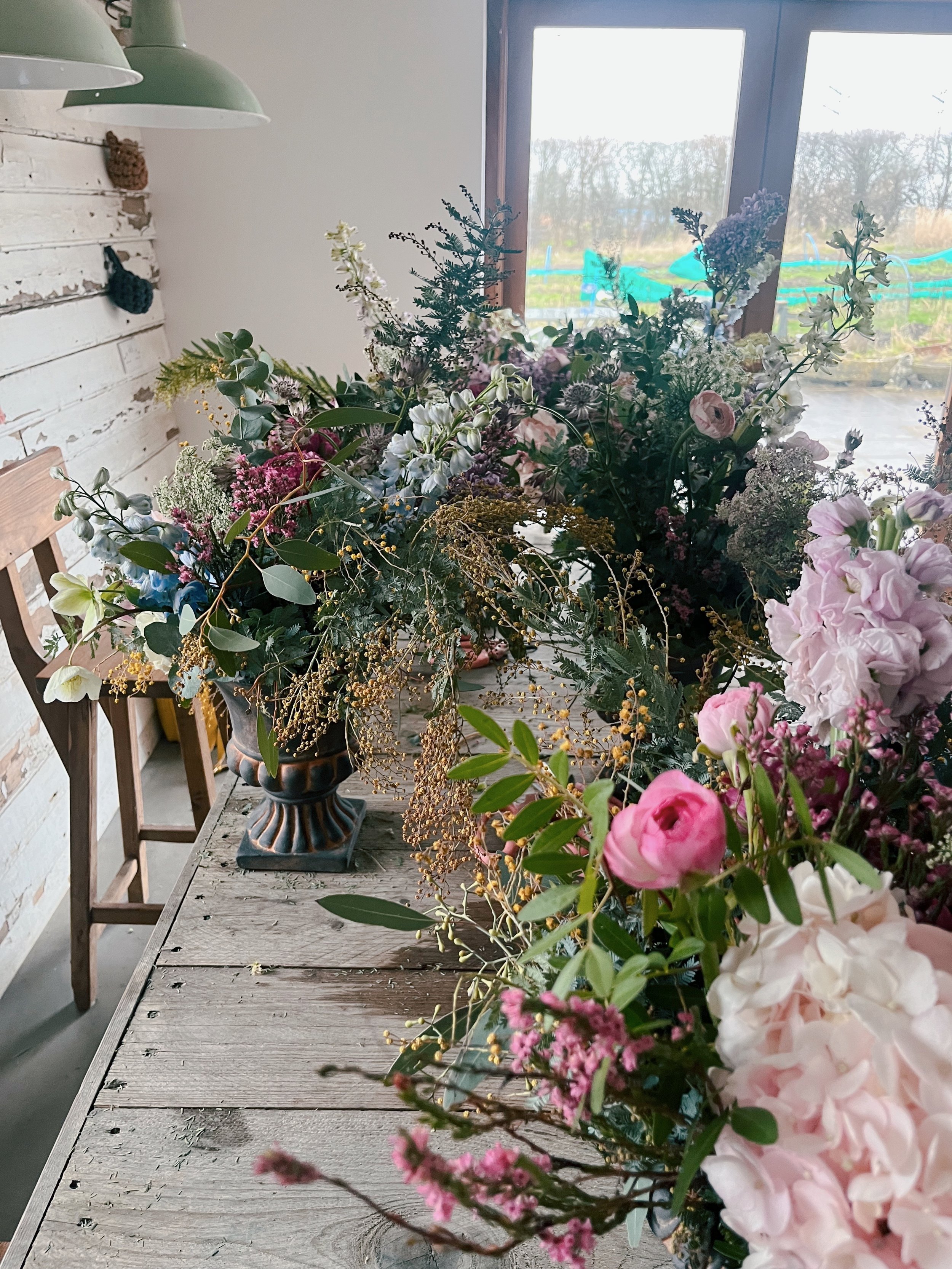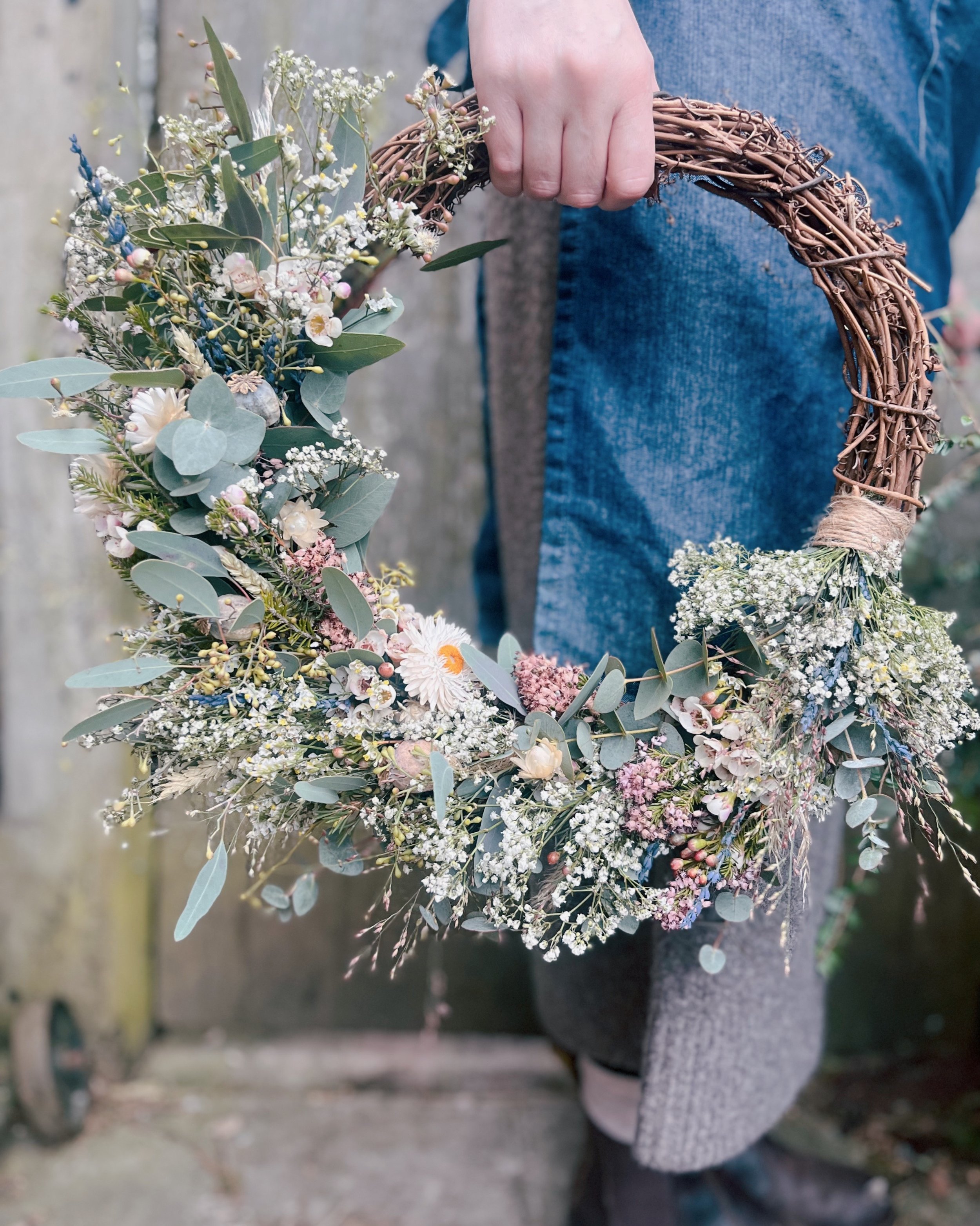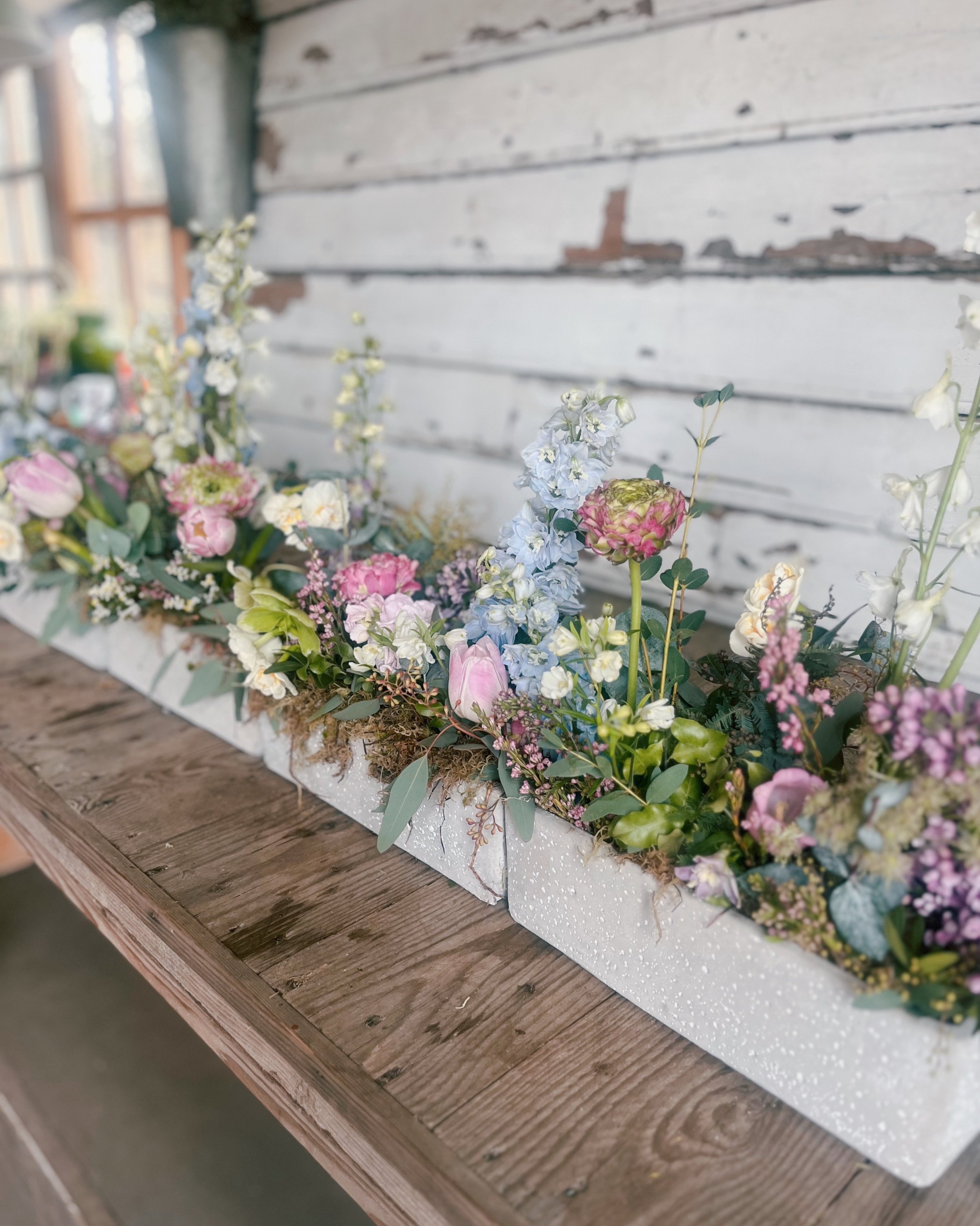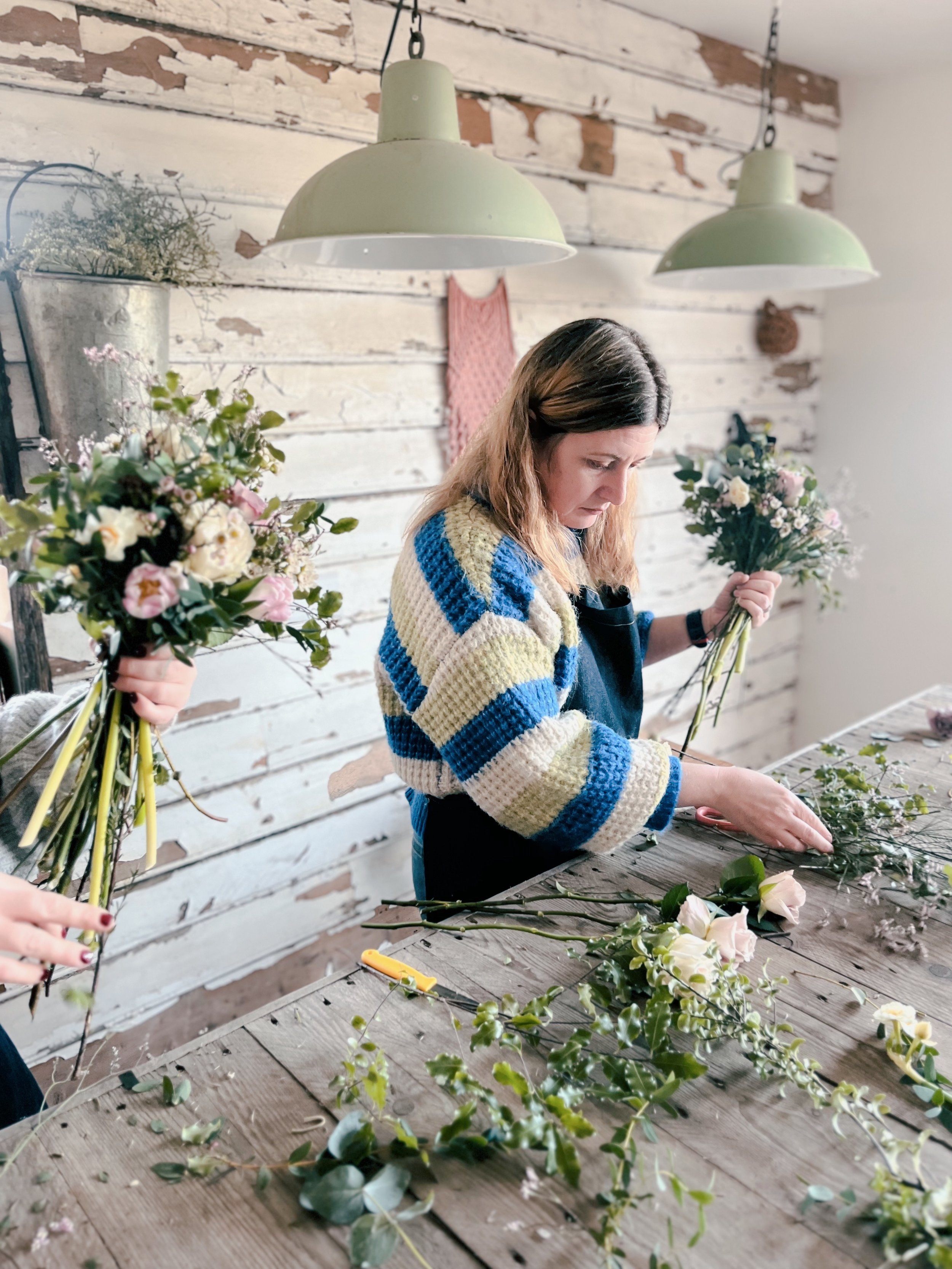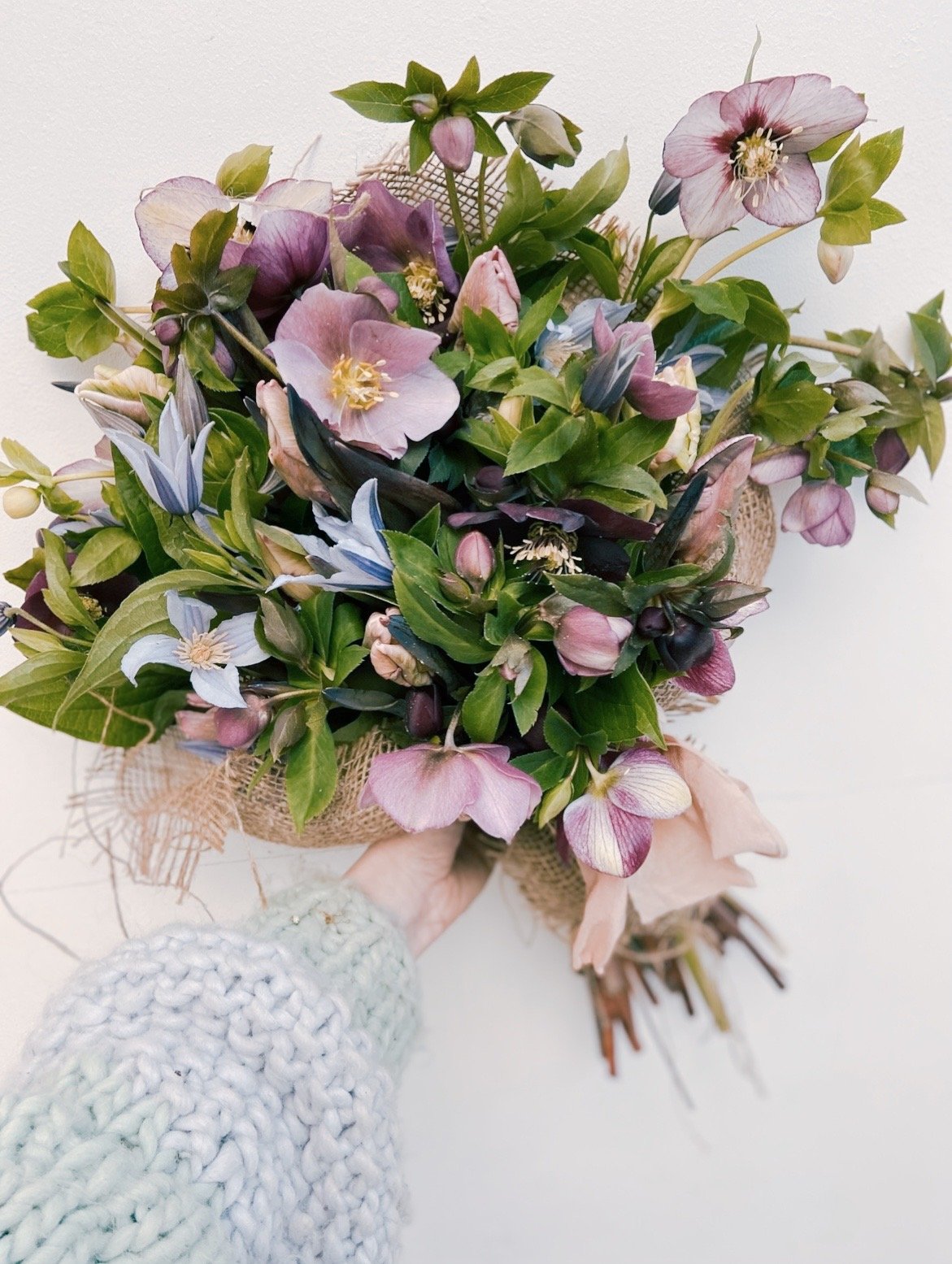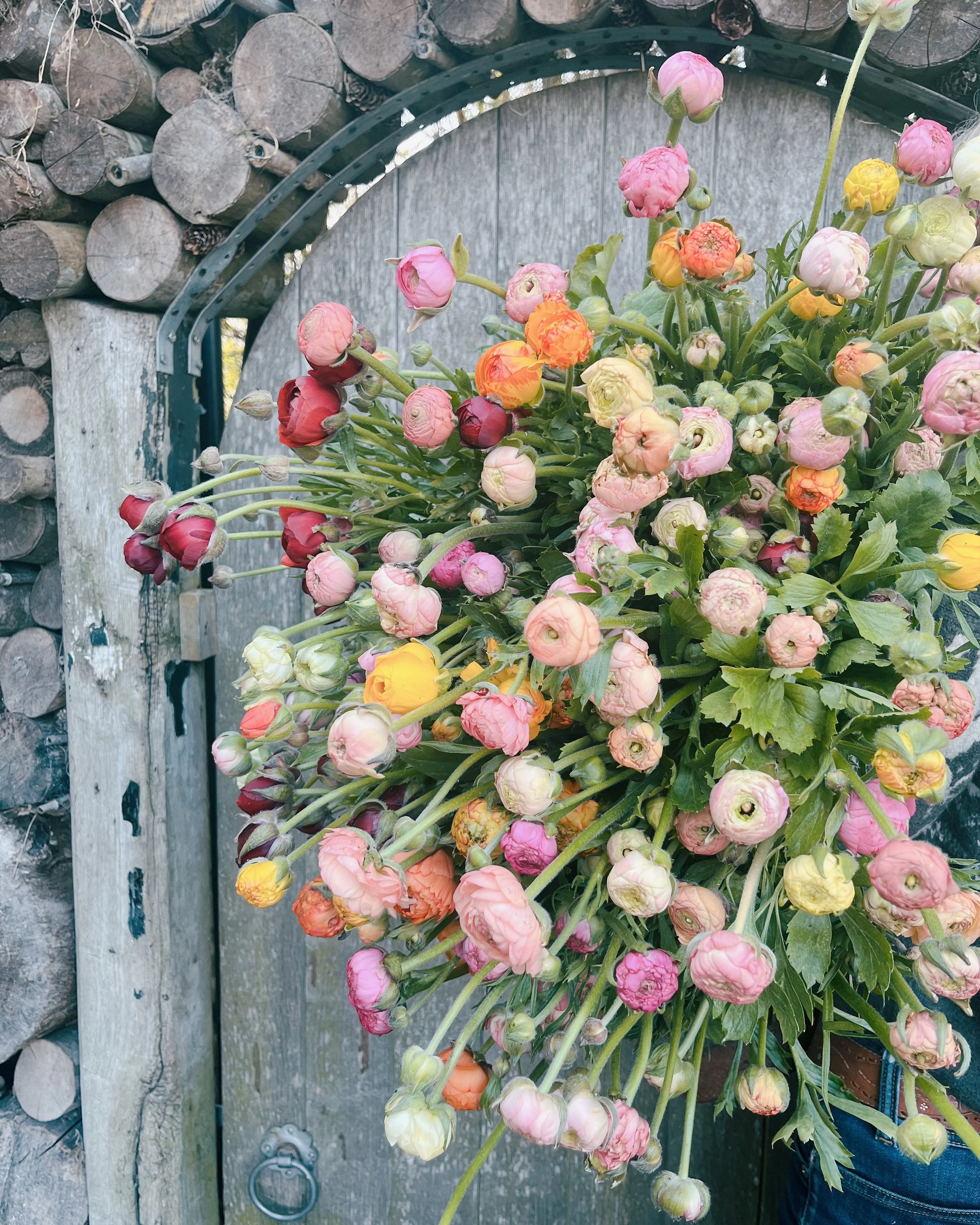
The Business of Floristry
Are you dreaming of running your own floristry business? Have you mastered the practical side and are now thinking what now? Working in the floristry sector can be one of the most rewarding jobs, making money through working with nature, doing something creative and most importantly something that you love! In order to build a profitable and sustainable floristry business it is so important that students master not just the practical side, but you also need to be confident with the business building blocks.
With over twenty years in the floristry industry and running two businesses including a wedding flower business and now a flower school, Alicia has learnt all the different aspects that you need to master in order to run a small business.
At Flourish Sussex Flower School we run two types of business courses our One to One in person workshops and our Online Business Programme.
Our one to one workshops are the perfect opportunity for students to sit down with Alicia and get to grips with each component that you need to master in order to build yourself a profitable and sustainable business.
The day starts at 9.30am at Alicia’s home studio in Hurstpierpoint. Over tea, coffee and biscuits we sit down and discuss what your dream business would be.
We then start looking at the building blocks. Throughout the day we look through a series of modules and work through exercises on finding the core of your business and identifying your ideal client. Social media, with a recorded module by Lou Chudley from Sparks Social. We look at website designing and marketing. After lunch and a walk, we dive into pricing, looking at example of proposals, flower allocation and recipes. We finish off the day watching pre recorded modules by past student Grace of Made with Grace Floral Design to provide you with inspiration.
We finish the day with targets and book in a further one to one session over Zoom later on in the year. The day will conclude at 3.30pm.
This day is perfect for anyone who would like to be guided and supported by Alicia in person.
Our online business programme contains ten pre recorded modules which cover each of the fundamental building blocks you need to master in order to build a profitable and sustainable business.
Throughout the course we will teach you about finding your customer base, branding, website building, conquering Instagram, pricing & proposal writing, running through a flower auction, working with Canva, collaboration shoots and brand identity, building confidence and nourishing you to become a small business owner. Bonus modules interviews with two previous Flourish students, now running their own wedding flower businesses.
How the course works:
Once you have signed up to the course we will be in touch to secure your date. Two modules will be released each Tuesday for four weeks. If you have any questions Alicia is just an email away.
Start dates of course for our Online Business Programme 2026:
6th January
3rd February
3rd March
7th April
5th May
2nd June
7th July
What out students say….
‘I completed the business course last year at Flourish Sussex Flower School with Alicia. The modules were incredibly packed with content, covering everything from social media and marketing to styled shoots and building a strong website presence.
As always, Alicia was an amazing teacher-informative, open, generous with her knowledge, she didn’t hold anything back!
The course has helped enormously in growing my business. I’m so grateful for the experience and the confidence it’s given me in areas that I was previously lacking’.
Sam, Mama’s That Flower
Price:
Introductory Price for 2026 Online Business Programme: £390.00
One to One Business Workshop: £390.00
To book simply visit our workshop page by clicking here or to select a payment plan option contact Alicia today by clicking here.
Sitting Down With Alicia the Founder of Flourish Sussex Flower School
Tell us about your journey into floristry?
I always smile when I tell this story as over the years I have asked so many students the same question and they come back with the most romantic of stories, telling me of their of childhoods spent in the garden and loving flowers at an early age. I did not think about flowers at all until I was twenty three! I liked them of the course, but I knew nothing and had very little interest.
My background was in the theatre, script writing and performing. After university I lost a huge amount of confidence and I couldn’t see a way I could make it in an industry which requires a huge amount of confidence. So I got an office job, a slightly odd decision, and one that I regretted after six weeks. Sitting behind a desk is not for me. I have always been creative, I draw and paint. Part of my office job however was to phone the London florists and organise the flowers for our events. I was always struck how the florists could take my brief and bring it to life.
To get me through that job I enrolled in an evening course. The course was a long way from what I teach, carnations, chrysanthemums (not the good ones) were everyway, cellophane, poly ribbon, but nevertheless I was hooked. I quit my job and decided to become a florist.
What was your training?
I did a two year diploma at a local college, but I didn’t get on with the course. My knowledge was limited on sustainability then, but from the very beginning I didn’t get on with foam. I hated using it and looked to use other methods.
I found it frustrating as we had to provide our own flowers and I didn’t have the budget that other students had. I also found it difficult being restricted by so many rules. To me I have always wanted to create gardens indoors. I am inspired by the seasons and have always wanted to be led by flower movement and not to be restricted by so many rules.
After my college course I went to London and enrolled in a career course at Jane Packer, then later at McQueens. Further still I enrolled in online training with world renowned teacher Kiana Underwood of Tulpina Design. The combination of the three educational settings taught me the type of floristry that I wanted to create.
Tell us about your wedding business
I created The Vintage Flower House back in 2008. At the time vintage colour roses were everywhere and I couldn’t get enough of them. I had no desire to open a shop. Although the idea of setting up a shop is a lovely romantic idea, for me the numbers didn’t add up. I could see that rents were high in the villages where I lived and working with perishable goods is always difficult, especially when you are trying to predict your footfall.
So I set up at home instead. I decided to just concentrate on weddings as I knew this was the area where you could generate the hignest income as a florist and I wanted to be seen as a specialist. This worked for me and the business grew rapidly.
Why did you decide to close The Vintage Flower House?
Life got in the way. Despite having my first son with no problems, he came with me on a wedding five days after I had given birth, the birth of my second son was not so straight forward. I had a complicated pregnancy and had a series of conditions which made me poorly. So I decided it was time for me to put a pin in the business and concentrate on my family.
How did Flourish Sussex Flower School come about?
Fast forward a few years, I had my daughter. When she was six months old I started to think about returning to work. At the time I knew that I couldn’t go back to the wedding business. My husband at the time worked extremely long hours and was often away, so I felt I couldn’t then be busy all of the weekends.
I started to look around to see what courses and training programmes were like in the local area. To my surprise nothing had moved on since I trained. Courses seem to be very stuck in traditional methods and if you went to London the courses were extremely costly.
I began to think about classes and I started to advertise Posy and Prosecco workshops. They became very popular. It was a great way for people to enjoy a night out with a friend or loved one, learn about flowers, create something beautiful and enjoy a glass of bubbles.
From here I started to think about career courses and if I was training again how I would want to be taught. This is when I created the two week career courses.
How has the business grown?
In 2020 the reputation of the business grew rapidly. Instagram was a fantastic tool for this. The school became known for teaching with sustainable methods, using British produce when available and creating beautiful designs and always bringing the outdoors inside.
The reputation of the school has continued to grow and despite me taking six months off for personal reasons, I am happy to say I am back teaching and I am really excited for the future of Flourish. I have lots of ideas that I am excited to implement them in 2026.
What has been your biggest failure?
I don’t really like to label anything as a failure as I believe you learn a lot from things that don’t go the way you hoped. I dreamt of owning my own studio and when it happened I was so happy and it was very beautiful. However the premises wasn’t right. The location was difficult, parking was an issue. It got ridiculously hot, not ideal when working with flowers and to be honest it was just a bit lonely!
I met Emma from Pitfields Cutting Garden back in 2021 and when she said she was expanding the workshop space, we talked about me relocating the school to the farm and I have never looked back.
Having Flourish based at Pitfields is the ideal location. Students can learn while being surrounded by seasonal growth.
What aspect of the school are you most proud of?
Creating a business that works around my children is definitely something I cherish.
I am really proud of the career courses, the practical two week intensive course. It is jam packed with knowledge and allows students to develop their own creativity. I am also really proud of our online business programme. This is a four week course which is made up of twelve online modules. I tell all of my students there is no point learning the practical side of floristry if you don’t know the business side. Our online course is a building block, covering all aspects of running a small business. It is full of tools, resources and information, it is definitely something I wish I had learnt when I started out.
The main aspect that I am most proud of however, is the community of Flourish graduates. I love seeing past students freelancing for each other and it is very special that so many students are now working in their dream job.
I am also a massive champion of women. I love to support women to follow their dreams. Whatever size of business you want to create it is such an achievement and a journey that I love to be part of.
What does the future hold for Flourish?
More career courses, more specialist classes, more demonstrations. As I said I am always bursting with ideas so I am looking forward to setting them in motion soon.
What advice woulf you give to someone who is thinking about a career in floristry?
Do it! I am obviously bias, but it is such a joy to work with nature. The most important thing is to find an educational setting that teaches you the type of floristry that you want to learn. At Flourish I hold two open mornings a year. These events are completely free and I feel they give people a great insight into the school. It’s a great industry, but it is also competitve so you need to find your style and carve out your own little piece in the industry.
If you are not confident don’t worry. try to put nerves to the side. I teach so many people who start off the two weeks feeling so under confident and by the end they are flourishing. Find a community that is supportive and will champion you, that is what we are all about at Flourish Sussex Flower School.
Flourish Sussex: Our Floral Community
My Core Belief
Ever since I was little I have learnt the importance of celebrating others. As a child growing up with two older sisters, there were many things they could do which I could not. Instead of seeing their achievements as a threat, I was taught to celebrate them, grow from them.
The importance of seeing others and celebrating other peoples successes is an important tool to take into our professional lives. By championing one another and bringing support, we can build a community, a supportive network which enables us all to reach our full potential.
The School
At Flourish I wanted to develop courses that incorporated floristry design that embraced art, design and nature. A school which celebrated the seasons and was lead by sustainable methods. For me it was imperative that the career courses taught at Flourish Sussex Flower School covered all the vital and fundamental designs used in the floristry industry, which had a strong emphasis on students style development.
Creativity
At the Flourish we want all our students to see themselves as individual artists. No two students are the same, therefore as their teachers myself and my team will guide each student to find their own individual style of floristry, which encompasses their creative flare and imagination.
Unlike more traditional courses, we celebrate that everyone is unique, therefore no two designs will ever be the same.
From Passion to Prefessional
Before embarking on one of our career courses you will fill out a questionnaire so we can get a sense of the journey that you wish to embark on. By finding out what has bought you to floristry, your passions (besides flowers) we will gentle guide you onto a path which will meet both your creative and business goals.
Grace from Made with Grace Floral Designs
The Flourish Community
One of the aspects that I am most proud of at the school, is the community of florists and growers that have graduated. So many flower friendships have been formed and many of our students go onto freelance for each other and support one another in their professional lives.
We also have many of our students who have established businesses return to the school to talk to our trainees and demonstrate.
It is a beautiful and supportive community, a vital tool when as florists you often work on your own.
Get Ready to Launch!
Embarking on a new journey is always nerve wracking, but one of the most important parts of the process is to find an educational setting which provides a creative, fun, relaxed, informative, safe environment for you to learn in.
Once you have completed courses at Flourish Sussex, help and support is always on hand to guide you to build confidence and self belief.
The floristry industry holds so many opportunities for aspiring florists and growers, let us guide you into this beloved industry of colour, nature and design.
What flowers are available for a winter wedding?
For a winter wedding, there are several beautiful flowers that are in season and perfect for creating a magical atmosphere. Some popular choices include elegant white roses, delicate stephanotis, classic ranunculus, sophisticated orchids, and charming anemones. These flowers can add a touch of elegance and romance to your winter wedding décor. Consider incorporating seasonal greenery like pine branches, eucalyptus, or holly to complement your floral arrangements and create a cozy and festive feel. With the right combination of flowers and greenery, you can create a stunning winter wonderland for your special day.
If you want to learn more about how to arrange with winter flowers why not join us for one of our seasonal workshops. Just click on the link here.
Alicia xx
Winter Flowers
Winter Flowers
How to care for Hellebores in the garden.
Hellebores are one of the joys of winter. They are a fantastic flower to arrange in vases in your home. So why not start by growing some in your garden. Here are 5 tips to help you get growing these gorgeous flowers.
Hellebores, also known as Lenten roses, are beautiful perennial plants that can brighten up any garden in the late winter and early spring.
1. Light and Soil: Hellebores prefer partial shade to full shade and thrive in rich, well- draining soil. Make sure to plant them in a spot with dappled sunlight to keep them happy
and healthy.
2. Watering: These plants like to be kept consistently moist, but not waterlogged. Water
your Hellebores regularly, especially during dry spells, to help them flourish.
3. Fertilising: Feed your Hellebores with a balanced fertiliser in early spring before they
start to bloom. This will give them the nutrients they need to produce beautiful flowers.
4. Pruning: Remove any damaged or yellowing leaves throughout the year to keep your
Hellebores looking their best. After the blooming season, you can cut back the old foliage to make way for new growth.
5. Mulching: Apply a layer of organic mulch around the base of your Hellebores to help retain moisture and suppress weeds. This will also protect the roots during extreme
temperatures.
By following these care tips, you can enjoy a stunning display of Hellebores in your garden year after year. Happy gardening!
